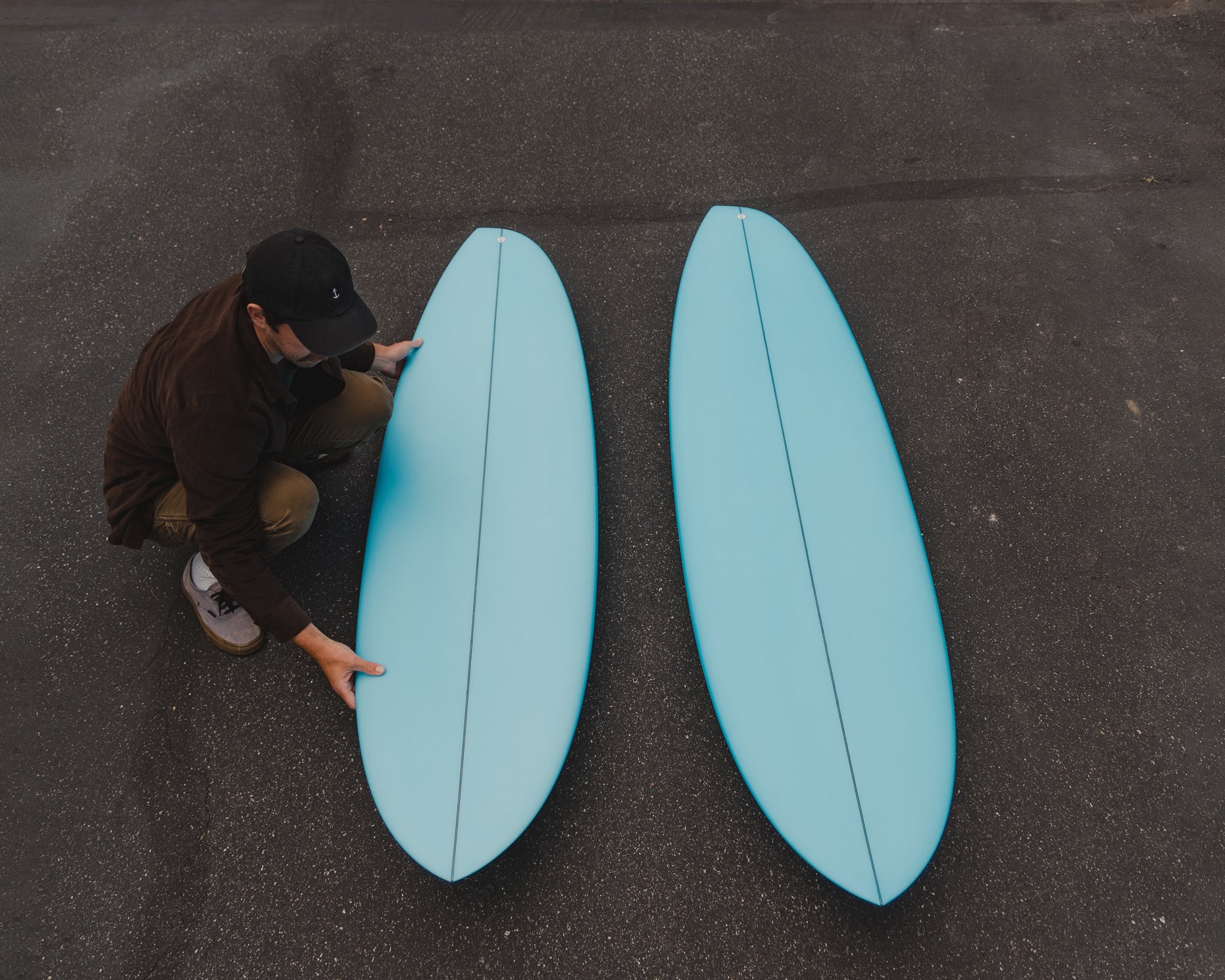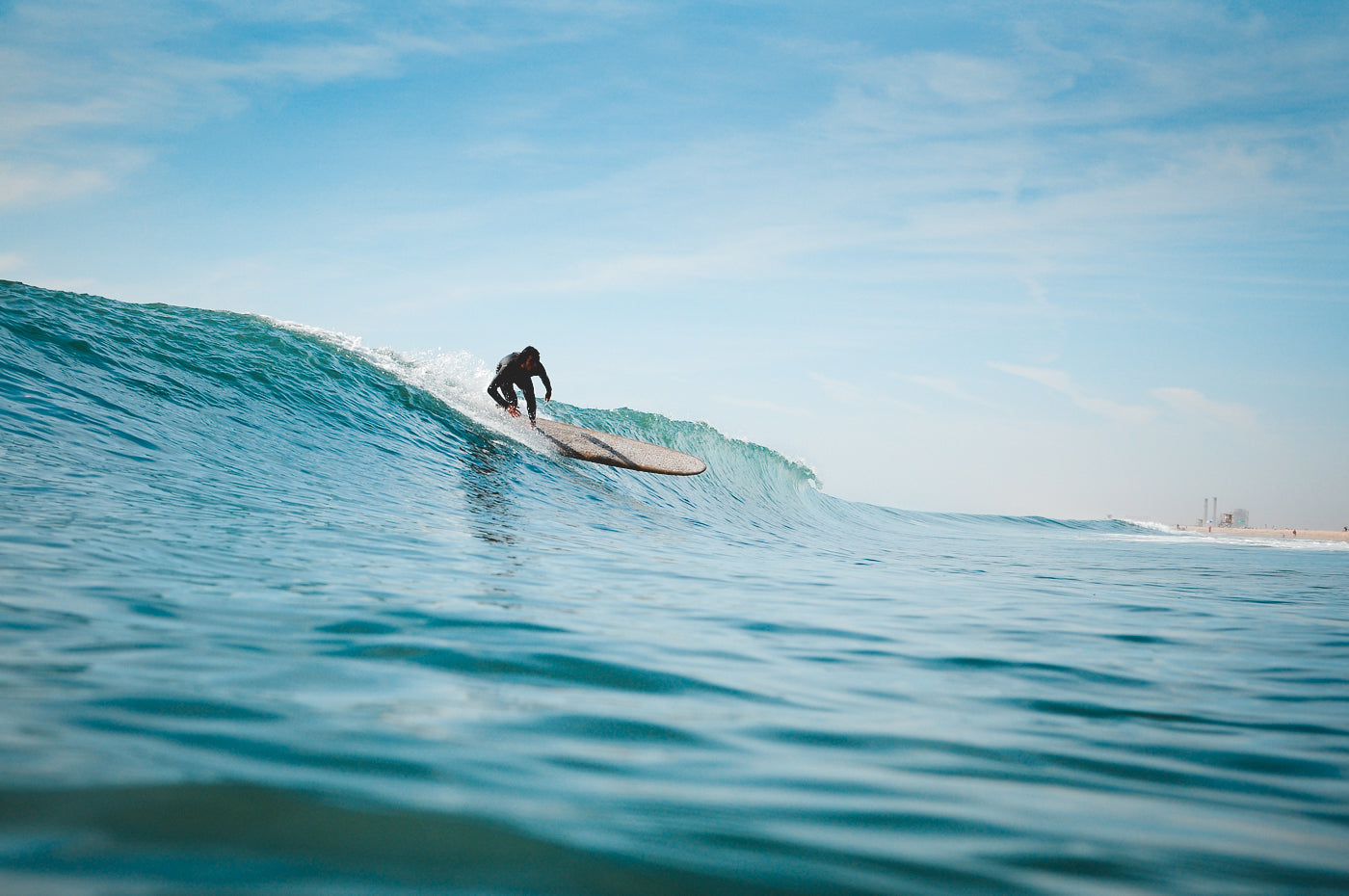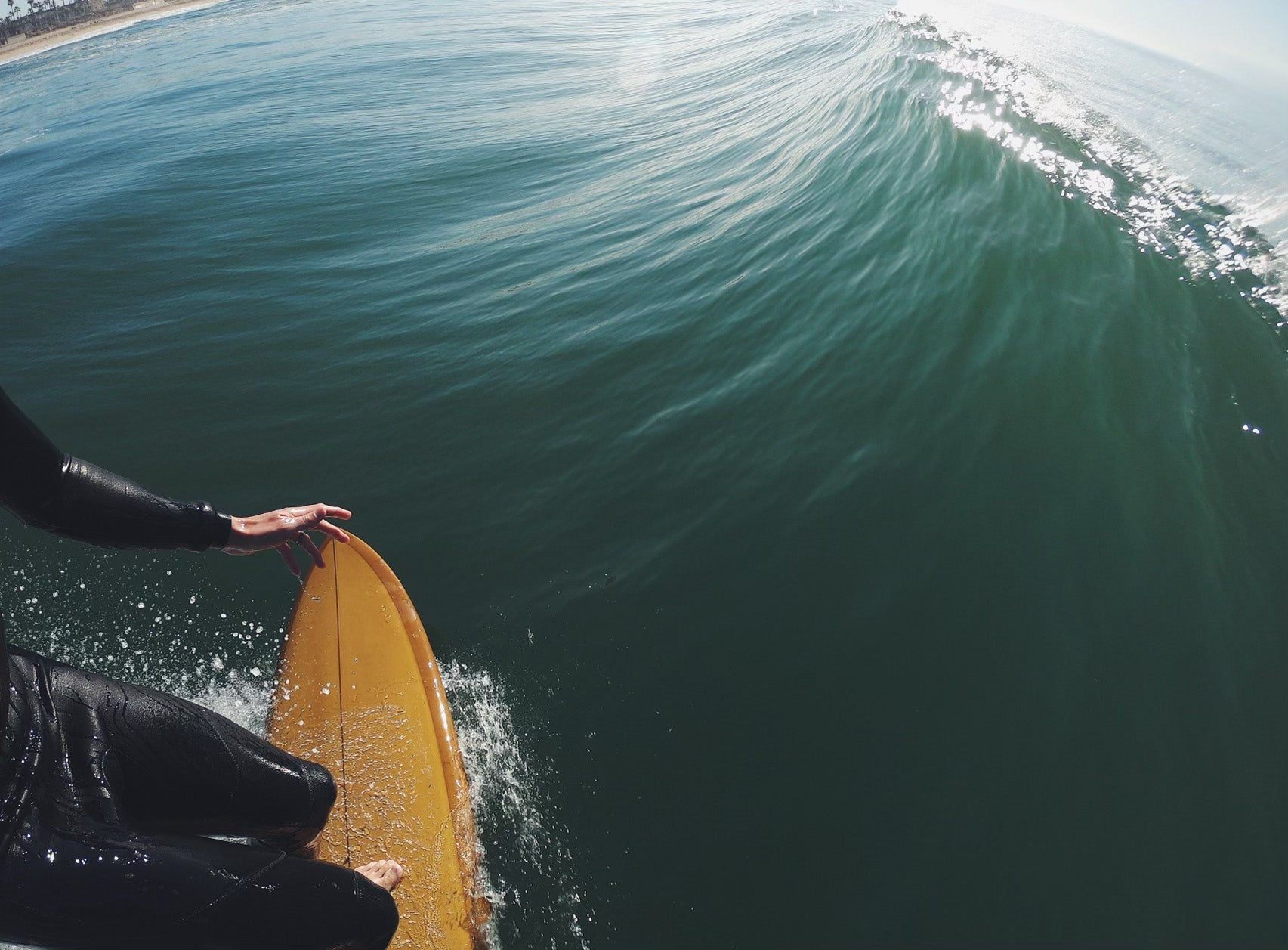"Can't Asymmetrical Surfboards Only Go One Way?"
·

·
The most common question I have been asked since we unveiled our new Beyond and Back model with Jeff Johnson last week is: "can't those boards only go one way?"
To which I want to smugly reply "you're thinking of a hull." (If you didn't get that joke, that's okay.)
The reality is an asymmetrical surfboard can surf frontside OR backside. Surfing is an asymmetrical experience, no matter how you slice it. There is always a rail line that is facing the wave and a rail line that is facing away from the wave. You also have a toe-side rail and a heel-side rail (unless you surf every back-hand wave switch).
I am a goofy footer, so the rail line of my toe-side is longer, and the rail line of my heel side it shorter (finishing off in a round tail). So essentially I am surfing a long, loose twin fin when I go left. Then, because I'm flying down the line with such incredible speed, I will reach the point where I need to cut back, at which point the round tail quad is engaged—making for a tighter and more precise turn.
Conversely, when I go right, the extra bite of the quads helps give me better control on the face of the wave as I use my heels to pump and direct the board down the line and up the face of the wave. This will give the board a better sensitivity and control when you go back-hand.
I surfed my 6'10 last week and found all above theories to hold true. This board does what a lot of intermediate+ surfers want to do: generate a lot of speed and then have plenty of control over the board for a sweeping cutback.
I have always enjoyed a lateral approach to surfing, so this style of surfing really appeals to me.
If you're "asymmetrical curious" my recommendation is to try one. Either come to our next Early & Often Surf Club meet-up or borrow one from a friend.
If a fast-flying, fluid turning board sounds like what you need in your life right now, make the bold choice and just order one :)
What's Next?



